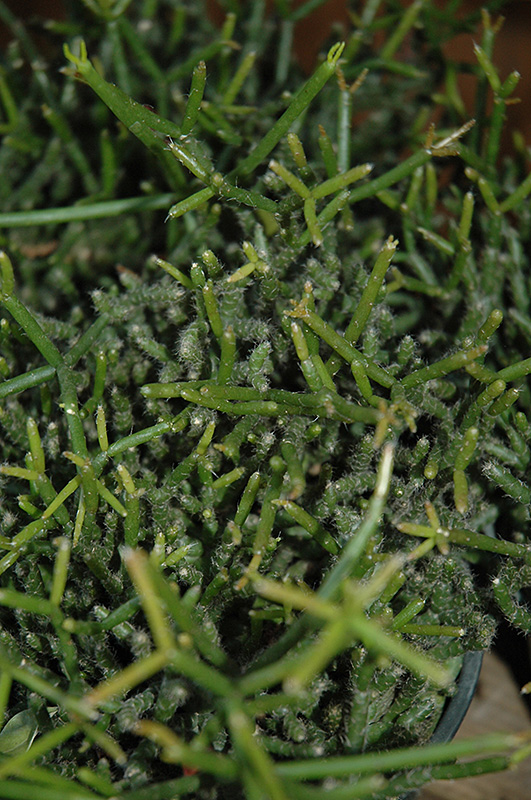Hairy Stemmed Rhipsalis
Description
This cactus variety is initially upright but cascades as it matures; green stems are covered in wooly white hairs; fragrant flowers appear in fall and are followed by deep red fruits; a great container or basket plant that will thrive indoors
Landscape Attributes
Hairy Stemmed Rhipsalis is a small succulent evergreen plant with a decidedly arching habit of growth. As a type of cactus, it has no true foliage; the body of the plant is wholly comprised of a linked series of hairy forest green fine thread-like segments which are connected together to form the branches of the plant.
Hairy Stemmed Rhipsalis is recommended for the following landscape applications;
Planting & Growing
Hairy Stemmed Rhipsalis will grow to be about 16 inches tall at maturity, with a spread of 24 inches. It tends to remain low and full right to the ground. It grows at a slow rate, and under ideal conditions can be expected to live for approximately 30 years.
This plant does best in partial shade to shade. Unlike most cacti, which are known for their strong preference for hot, dry growing environments, this plant is native to tropical climates and grows in areas with more humidity and rainfall than most cacti. It does best in average to evenly moist conditions, but will not tolerate standing water. Like most succulents and cacti, this plant prefers to grow in poor soils and should therefore never be fertilized. It is not particular as to soil type or pH. It is somewhat tolerant of urban pollution. This species is not originally from North America. It can be propagated by cuttings.
Hairy Stemmed Rhipsalis is a fine choice for the garden, but it is also a good selection for planting in outdoor containers and hanging baskets. It is often used as a 'filler' in the 'spiller-thriller-filler' container combination, providing a mass of flowers and foliage against which the thriller plants stand out. Note that when growing plants in outdoor containers and baskets, they may require more frequent waterings than they would in the yard or garden. Be aware that in our climate, this plant may be too tender to survive the winter if left outdoors in a container. Contact our experts for more information on how to protect it over the winter months.

